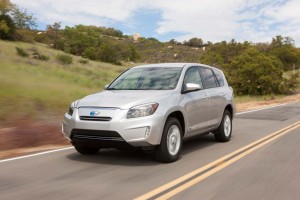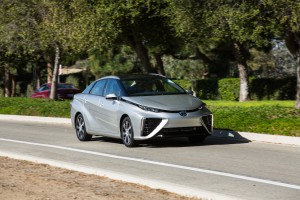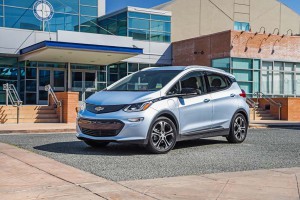Long focused on hydrogen fuel-cell technology, Toyota Motor Co. is reversing course and will now make a push into long-range battery-electric vehicles, according to several sources.
The move would add the Japanese giant to the list of manufacturers looking to market vehicles that get more than 200 miles per charge. A senior source within the company told TheDetroitBureau.com that Toyota will continue to work on hydrogen power, but he acknowledged the necessary “infrastructure isn’t there,” leaving the company no alternative if it hoped to meet stringent new emissions and mileage regulations.
“China has been pressure Toyota,” the source said, noting that the Asian nation has been aggressively promoting electrification as a way to address its endemic smog problems. U.S. regulators and clean advocates are also calling on Toyota to deliver battery cars, he said, adding, “That’s the big change for us.”
(Toyota Corolla turns 50. Still number one, but can it maintain momentum? Click Here for the story.)
Toyota was actually one of the first major automakers to bring a battery-electric vehicle to market. An early version of the RAV 4 EV was marketed between 1997 and 2003. A more advanced model was briefly offered between 2012 and 2014, borrowing much of its underlying technology from start-up Tesla Motors.
In fact, Toyota was an early investor in Tesla – even selling the California battery-carmaker its abandoned assembly plant in Fremont, California. They two were initially planning to work on other joint projects before Toyota shifted gears, putting its emphasis on hydrogen fuel-cell vehicles.
FCVs, the Japanese maker argued, have a number of advantages over battery power. The new Toyota Mirai hydrogen car can, for example, get about 300 miles per tank of hydrogen and then refill in about five minutes – overcoming both range anxiety and concerns about long charging times.
But there has been significant progress made on battery development. Tesla can now get as much as 300 miles per charge with its Model S P100d sedan, and it can give a motorist an 80% recharge in less than half an hour. More significantly, both the upcoming Tesla Model 3 and the new Chevrolet Bolt will get over 200 miles per charge while carrying sticker prices of less than $40,000 before applying $7,500 federal tax credits.
That could make EVs “the better proposition,” the Toyota source said, especially if a hydrogen distribution infrastructure doesn’t come together. Currently, there are only a handful of refueling stations in the U.S., most in Southern California and in the San Francisco Bay Area. South Korea and Japan both hope to expand their networks by 2020. But experts say the EV charging base is growing at a far more rapid pace in many countries around the world.
The slow pace of growth of hydrogen distribution would create problems for Toyota, as it would likely not be able to meet regulations passed by California and nearly a dozen other states requiring a sharp increase in so-called zero-emission vehicles, or ZEVs, by 2018. China is also pushing for rapid ZEV growth, going so far as to lift monthly registration limits on qualified vehicles in cities like Shanghai and Beijing.
“Toyota has been a major hold-out on EVs, but it appears that it now realizes that without them it may be difficult to satisfy tightening regulations,” said Takeshi Miyao, managing director of consultancy Carnorama, told the Reuters news service.
While Toyota doesn’t plan to abandon its fuel-cell program, a report by Japan’s Nikkei news service indicated the maker will set up a development team next year to work on vehicles that could get at least 300 km, or nearly 190 miles, per charge.
Sources inside Toyota said that while shorter ranges could meet the needs of most customers, the general consensus in the industry is that range anxiety will persist until the 200 mile barrier can be broken, meaning about the same distance per charge as most vehicles can deliver on a tank of gas.
How soon Toyota would be able to get a longer-range EV on the road is uncertain. But it does have the advantage of already having some of the underlying drivetrain technologies in-house. Fuel-cells are sometimes referred to as refillable batteries because they provide current that can be used to power the same motors found in a battery-based electric vehicle.
There are plenty of suppliers for lithium-ion batteries who would be able to assist the industry giant, meanwhile.
(Daimler plans massive increase in battery production to support new Mercedes-EQ battery-car brand. Click Here for more.)
Toyota may also be looking at other, cutting-edge technologies such as ultracapacitors. Sometimes likened to “energy bottles,” they offer the ability to rapidly charge and discharge though, until now, they can’t store much power. But a new version has been developed by scientists at UCLA using a Nobel Prize-winning substance called graphene. These new ultracapacitors could be used in the new electric vehicle under development by Fisker Inc.
Whichever way it’s achieved, Toyota officials now believe that battery power is becoming more competitive than just a few years ago.
(Click Here for more on the ultracapacitor technology going to the Fisker Emotion EV.)



